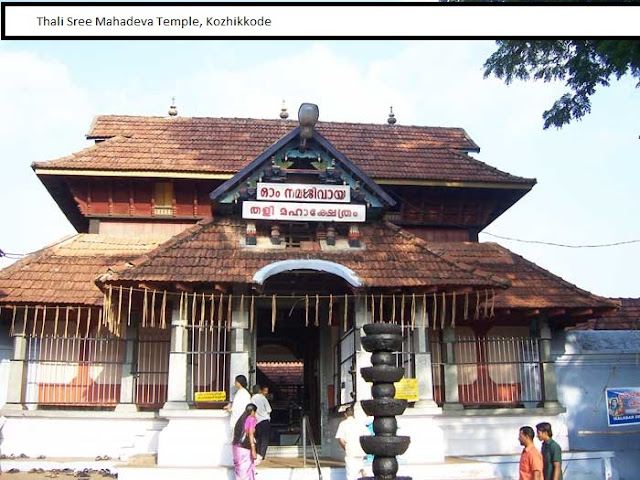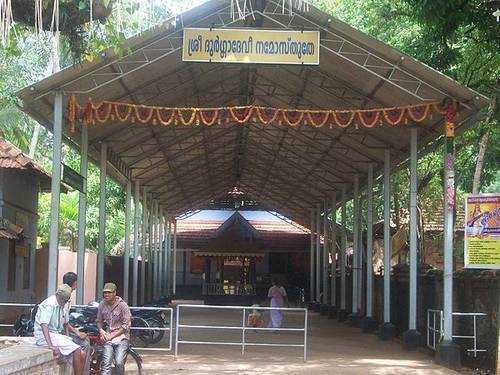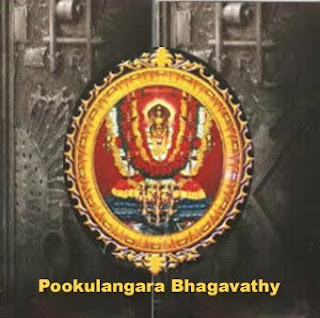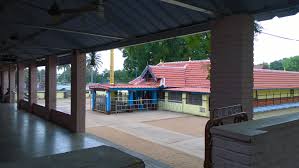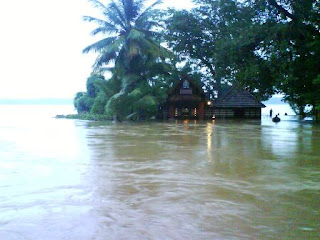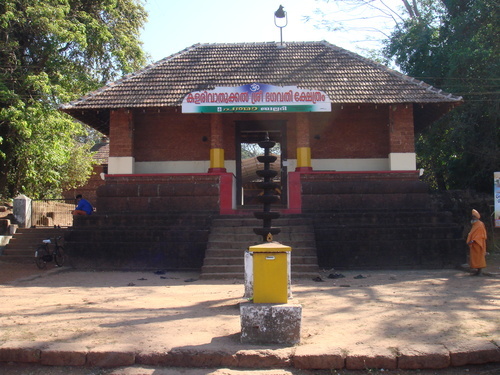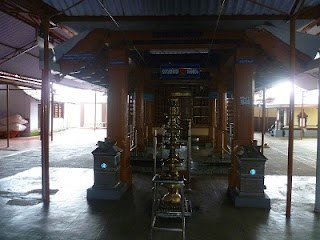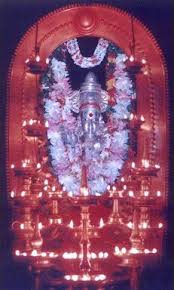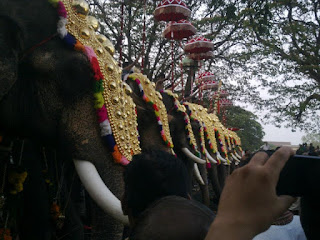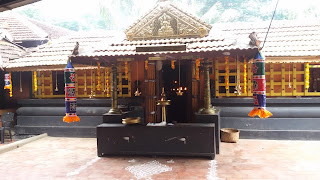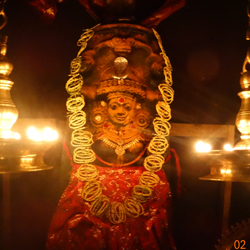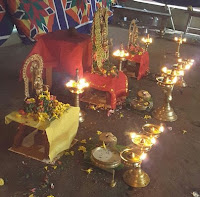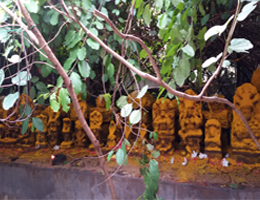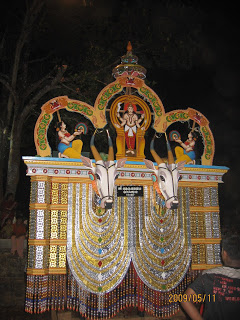Onam,
the grandest festival of Kerala, is a 10-day celebration of the end of monsoon,
a rich and healthy harvest, as well as the return of King Mahabali to his
ancient kingdom. A time for family get-togethers, prayers, feasts, songs and
traditional dances, Onam or Thiruvonam shows off kerala at its cultural best.
The beautiful landscape of Kerala can be seen in its full radiance at this time
of the Malayalam New Year. Due to be celebrated on 14th September this year, it
can be a great time to visit the state and the temples here whose beauty has
earned it the epithet of being God’s Own Country.
Ten-Day Onam Celebrations:
Onam,
the harvest festival is celebrated in the month of Chingam, the first month of
Malayalam Calendar. High-spirited people of Kerala celebrate Onam with gaiety
and fervor. The festival is celebrated for a period of ten days, starting from
the first day "Atham" and continuing till tenth and the biggest day called
"Thiru Onam".
Atham (September 4, 2016):
Celebrations
of the first day, Atham, are marked by intricate floral carpets called
Pookalam. More flowers of different colours are added to this pookalam on each
passing day. Girls take great delight in designing them in the front courtyards
of their house. Boys take pleasure in helping them gather flowers. Special
prayers are also said on Atham in a local temples. Hectic activities for the
carnival begin in the state from this day onwards.

The
Atham day also marks the start of festivities at Thrikkakara temple, which is
considered as one of the centers of Onam and the abode of Mahabali, with the
raising of the festival flag. The Onam celebrations across the state, starts
off with a grand procession at Thrippunithura near Kochi called Atthachamayam. The
event recalls a royal tradition when Maharajas of erstwhile Kochi State as a
custom traveled to the Thripunithura Fort with their entire entourage. Today,
even in the absence of the King, the custom retains its regal charm. Highpoints
of the event are performances by folk artistes, caparisoned elephants, musical
ensembles and dance shows by skilled artistes.
Chithira (September 5, 2016):
Two
more layers are added to the pookalams, using mostly orange and creamy yellow
flowers. People also visit temples to seek blessings.
Chodhi (September 6, 2016):
It
is a fun-filled day that marks the start of shopping for Onam. People begin
buying new clothes, jewellery, and gifts.
Vishakham (September 7, 2016):
Housewives
visit the markets to stock up on ingredients to make the elaborate Onam meal.
Markets traditionally used to hold their harvest sale on this day, making it a
popular day for shopping. Pookalam design competitions also commence across
Kerala on his day.
Anizham (September 8-9, 2016):
Snake
boat races kick-off across the state. A mock race is held at Aranmula as a
rehearsal for the race that's held there after the main day of Onam.
Thriketa (September 10, 2016):
People
start visiting their families and fresh flowers continue to be added to
pookalams.
Moolam (September 11, 2016):
The
state is beautifully decorated and official government Onam Week celebrations
get underway.
Pooradam (September 12, 2016):
The
day starts with the ritual installation of pyramid-style clay statues, known as
Onathappan, in the center of pookalams. The day starts off with a major
traditional ritual where the small statues of Mahabali and Vamana will be
washed and cleaned and taken around the house in a procession. It will be later
installed in the center of the pookkalam smeared with a rice-flour batter. The
smearing is done by small children who are called Poorada unnikal. From this
day onwards, the statue will be called Onathappan. By now, the pookalams have
greatly grown in size and complexity of design.
First Onam/Uthradom (September 13, 2016):
The
ninth day of Onam Celebrations. Uthradom is the ninth and the penultimate day
of the festival of Onam. It is considered as Onam eve and celebrated in a very
big way. The importance of this day is last minute extreme shopping frenzy
called as Uthradappachil and is considered the most auspicious day for purchase
of fresh vegetables and fruits along with other provisions from the Thiruvonam
day.
Uthradam
is known as 'First Onam' because it marks the day when King Mahabali descends
onto Kerala. Traditional myths say that the king will spend the next four days
touring his erstwhile kingdom and blessing the subjects. Due to this, Uthradom
is celebrated in a very pompous manner with larger pookkalams and celebrations
in all households. The Uthradom lunch is generally grand. Women normally cut
the first set of vegetables on this day that marks the celebrations of
Thiruvonam in each household and preparations for grand Thiruvonam feast also
start during the evening of Uthradom day.
Second Onam/Thiruvonam (September 14,
2016):
The
tenth and final day of Onam celebrations that culminates the 10 days of Onam
Carnival. The day is known as Thiru-Onam (Sacred Onam Day) also known as
'Second Onam'. Myth says that this was the day Mahabali was sent to the
netherworld ( Pathalam) by Vamana. The day marks the return of Mahabali to his
fabled land (Kerala), as per the boon he received from Vamana to meet his
subjects and bless them. Apart from this myth, this day is considered
auspicious being birthdays of several temple deities representing Vishnu, like
Vamana of Thrikkakara temple, Sree Padmanabha Swamy of Thiruvananthapuram etc.
Activities
begin early in the morning. People clean their house, apply rice flour batter
on the main entrance (a traditional welcome sign), take an early bath, wear new
clothes and distribute alms to needy. The eldest female member of each family
presents clothes to all the members of the family. Special prayers and Masses
are organized in temples, churches and mosques that highlight the secular
nature of festival. The pookkalam is prepared to welcome Mahabali.
"Onasadhya"
is the most delicious part of the grand festival . It is considered to be the
most elaborate and grand meal prepared by any civilization or cultures in the
world. It's a feast which if enjoyed once is relished for years. Legend goes
that Mahabali who was so attached to his people that he requested Gods to allow
him to visit Kerala every year. People of Kerala wish to convey that they are
enjoying the same age of prosperity as was witnessed during the reign of King
Mahabali by preparing a grand Onasadhya.
Rich
and the poor, everybody prepares Onasadya in a grand fashion as people of
Kerala are extremely devotional and passionate when it comes to Onasadya. So
much so that, it has led to saying, 'Kaanam Vittum Onam Unnanam'. Meaning - men
go to the extent of selling all their possessions for one Onam sadya.
Most
cities in Kerala, such as the political, commercial and cultural capitals
Thiruvananthapuram, Kochi and Thrissur, are lit up with lights and fabulous
displays of fireworks. Sumptuous Onam Sadya feasts are prepared. In Thrikkakara
temple, a mega-feast is conducted which is open to the public and is attended
by more than twenty thousand people.[13] The afternoon is marked with various
traditional Onam games, usually seen in rural areas, and are organized by
resident associations and clubs in large cities. In some parts of Kerala,
people indulge in various games and dances (Onakkalikal) during and post
Thiruvonam. These include Thiruvathirakali, Kummattikali, Pulikali etc.
Third Onam/Avvittom (September 15, 2016):
Preparations
are undertaken for King Mahabali's departure. Onathappan statues are immersed
in the sea or river, and pookalams are cleared and removed. The day is also
important, as the famous Pulikali is held in the city of Thrissur. In this, men
dressed as lions, tigers and leopards, parade through the city in large
numbers. The Puli-Kali also mark the end of traditional Onam celebrations.
Fourth Onam/Chatayam (September 16, 2016):
Onam
Week celebrations end with a street parade, traditional art forms, and dance in
Trivandrum.
Time
for Fun - Dances and Games:
After
the grand meal on Thiruvonam, it's time for people to indulge in recreational
activities and enjoy the festival. Men of strength and vigor go in for rigorous
sports. There is a set of traditional games to be played on Onam which are
collectively called, Onakalikal. Traditional games of Onam constitute rigorous
sports like Talappanthukali, Kutukutu and combats like Kayyankali and
Attakalam.
Women
go in for dancing activities as there are specific dances like Kaikottikali and
Thumbi Thullal for the festival of Onam. Women performing the graceful clap
dance called Kaikotti kali in their traditional gold bordered mundu and
neriyathu presents a splendid sight. Besides, there is also a tradition of
playing on a decorated swing hung from a high branch. Onappaattu - Onam Songs,
are also sung on the occasion.
Celebrations
and cultural programs are held all across the state to mark the festival of
Onam in which a large number of people participate. Prominent amongst them are
Vallamkali- the Snake Boat Race and entertaining events like Kummatti kali and
Pulikali. The other highpoint of Onam is the dazzling display of fireworks. The
state of Kerala can be seen engulfed in light and spirit of merriment when
people burst patassu or fire crackers.
Wishing
all a prosperous year ahead.. Team Devaayanam.

